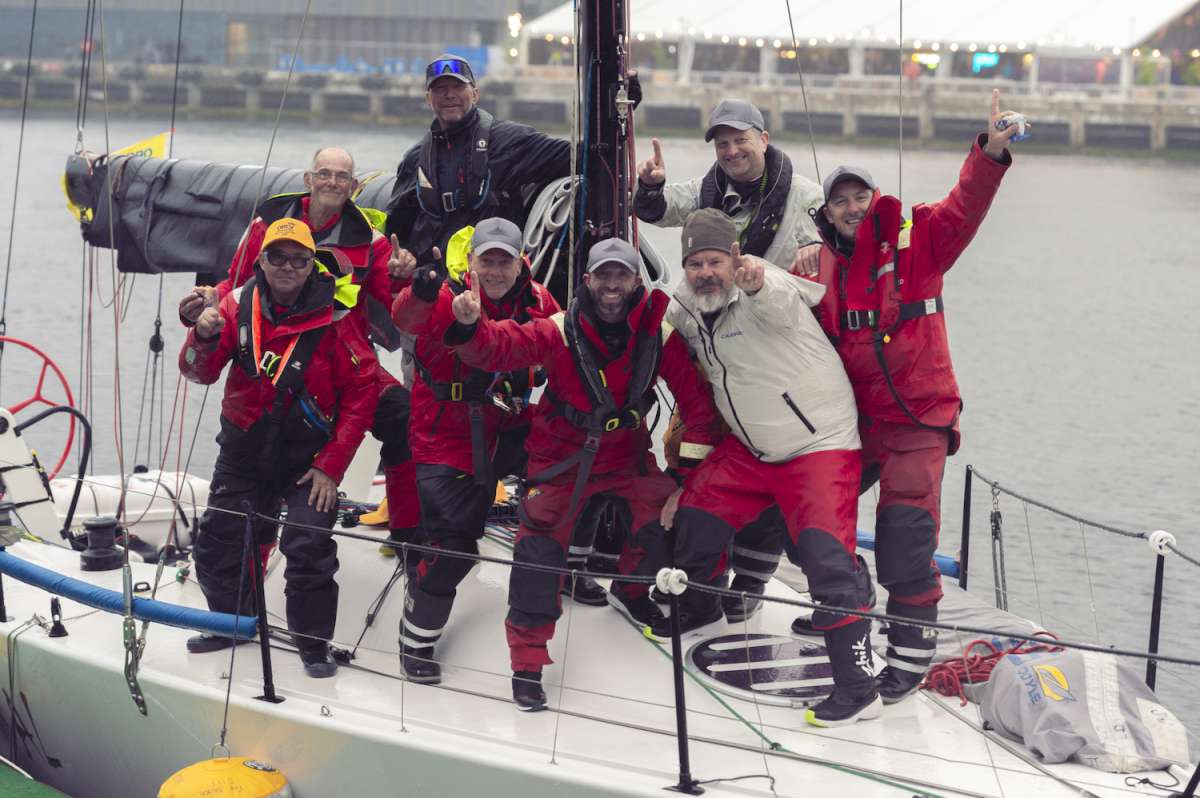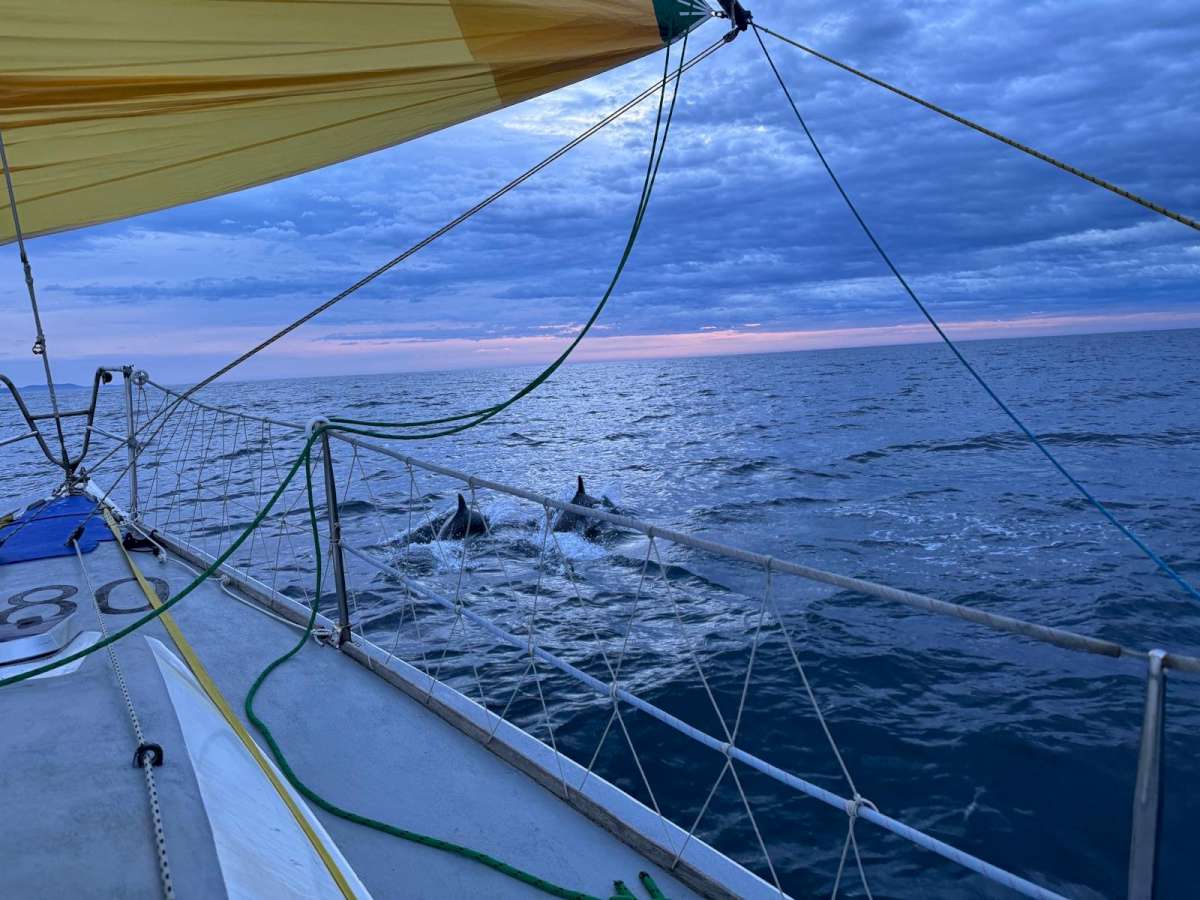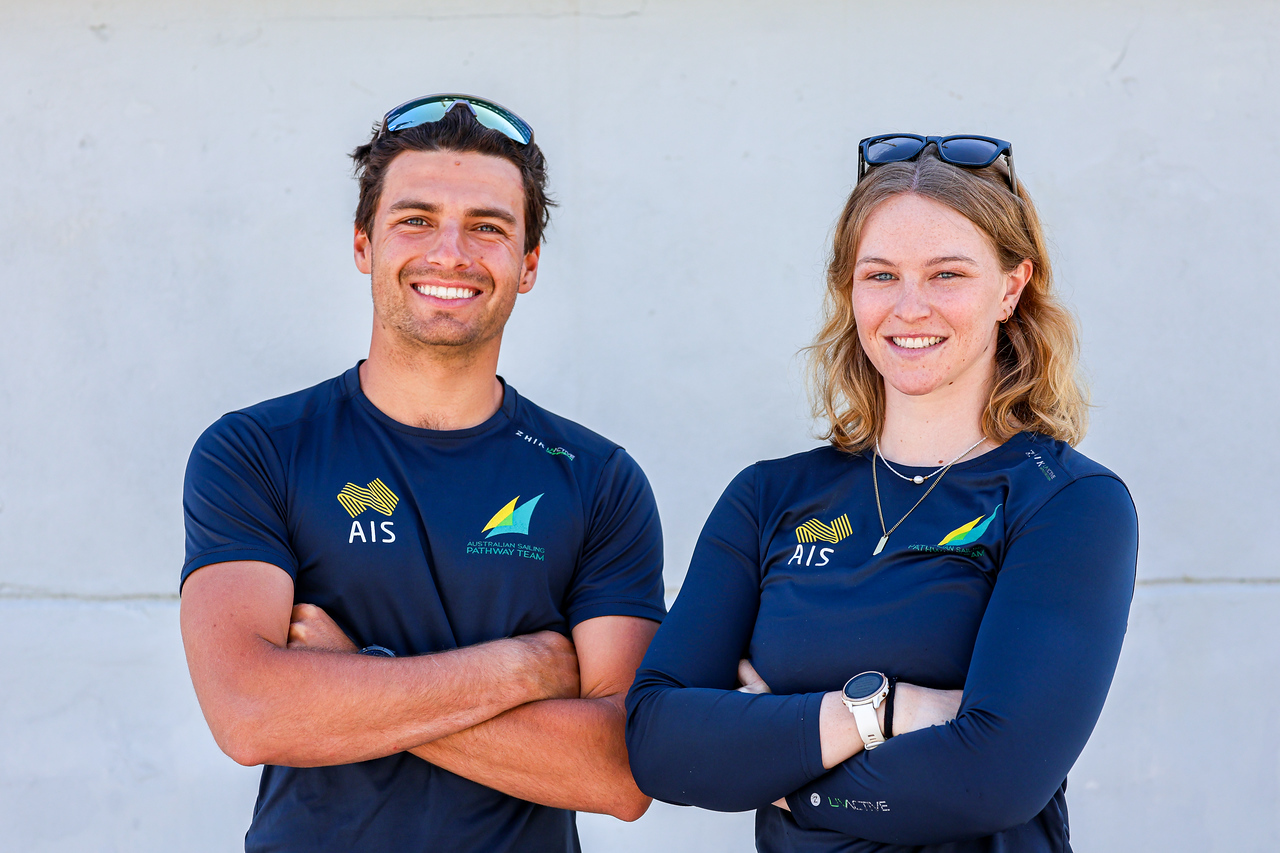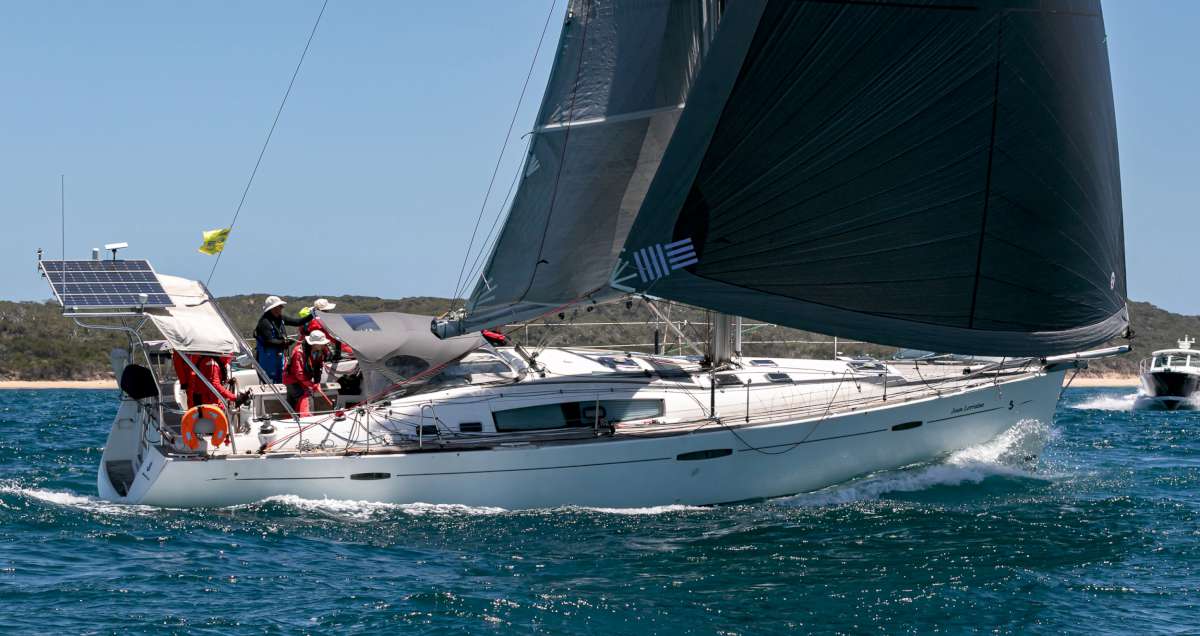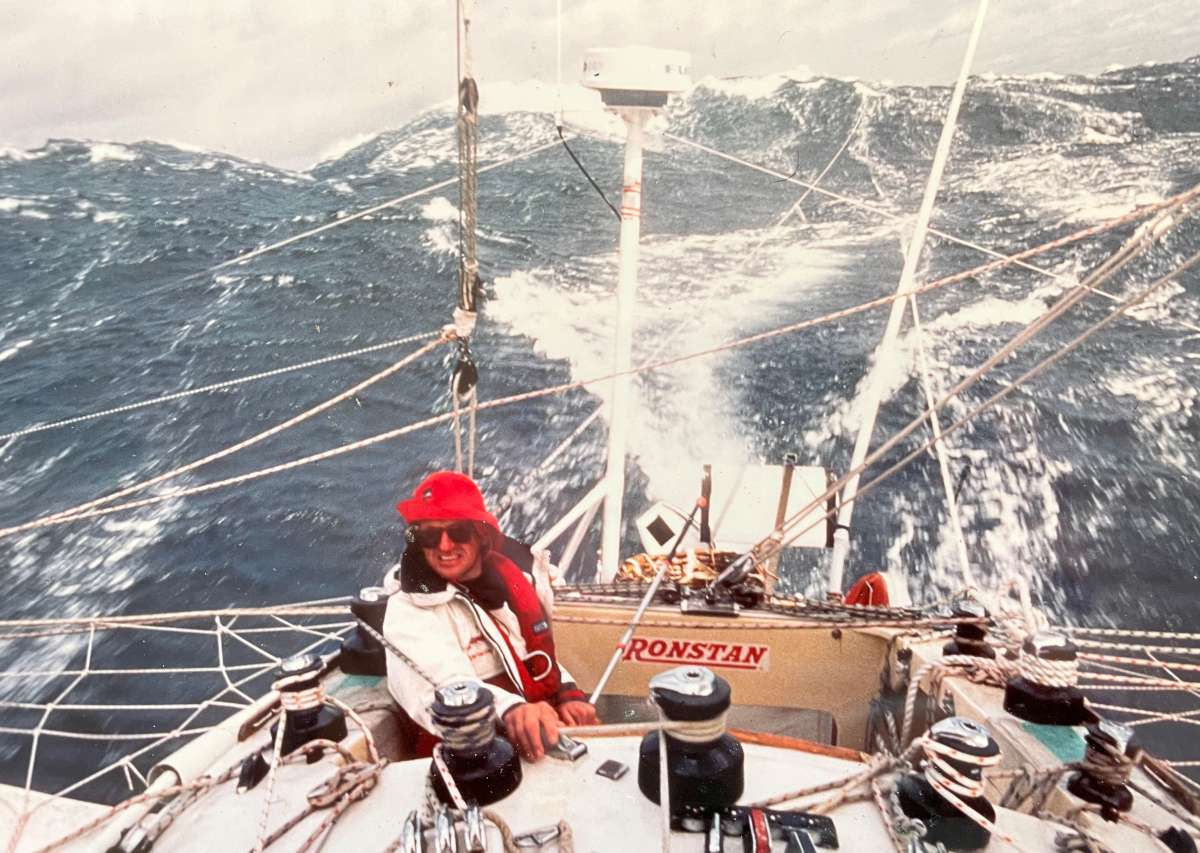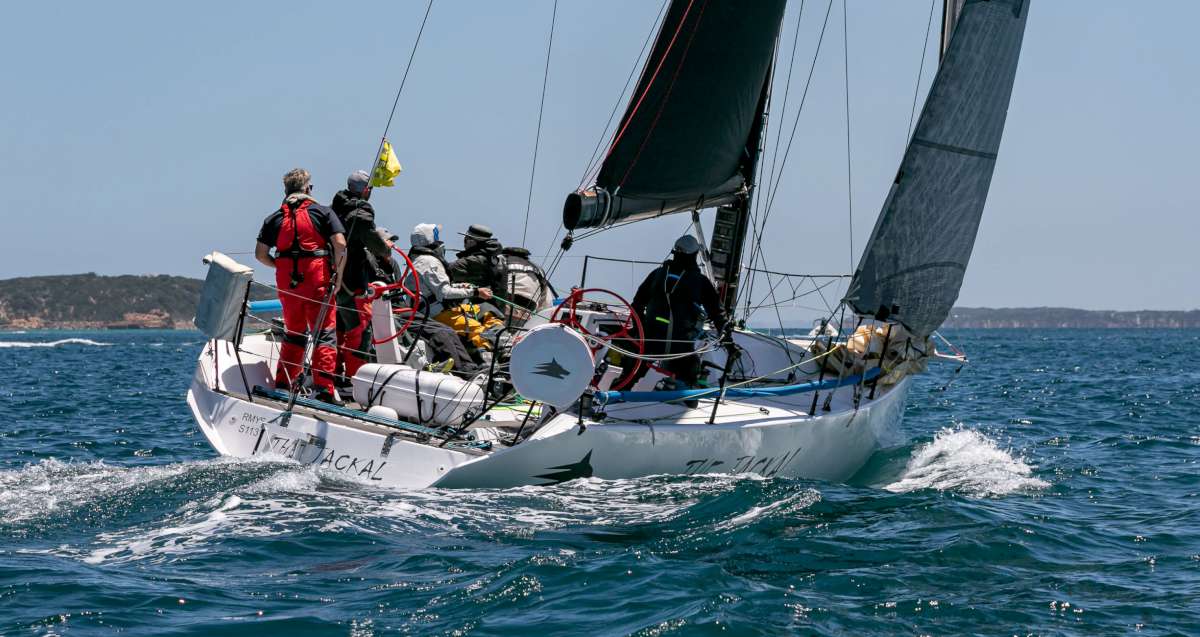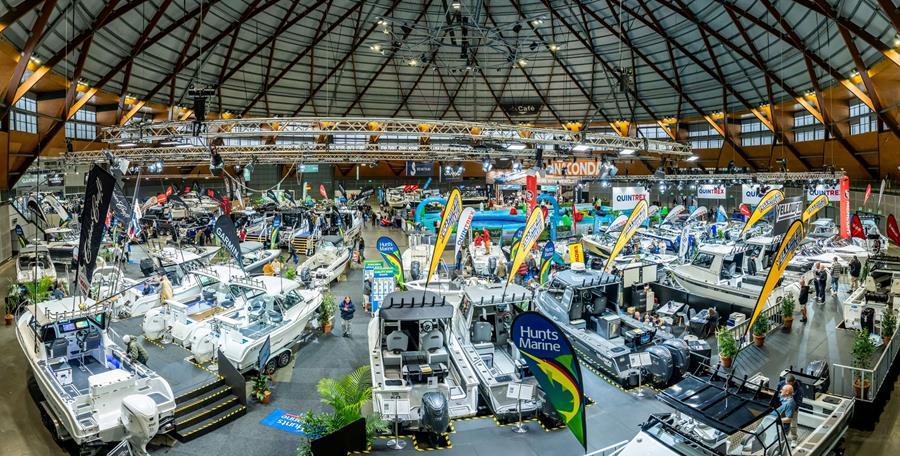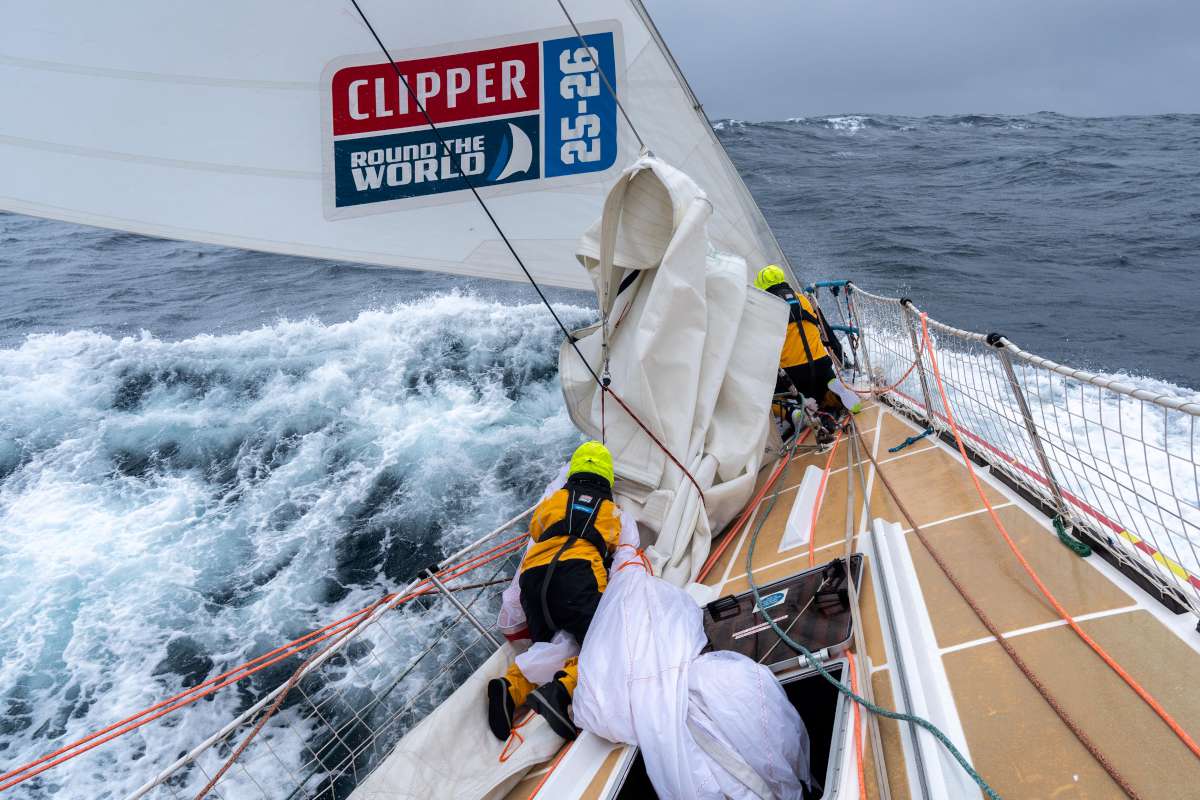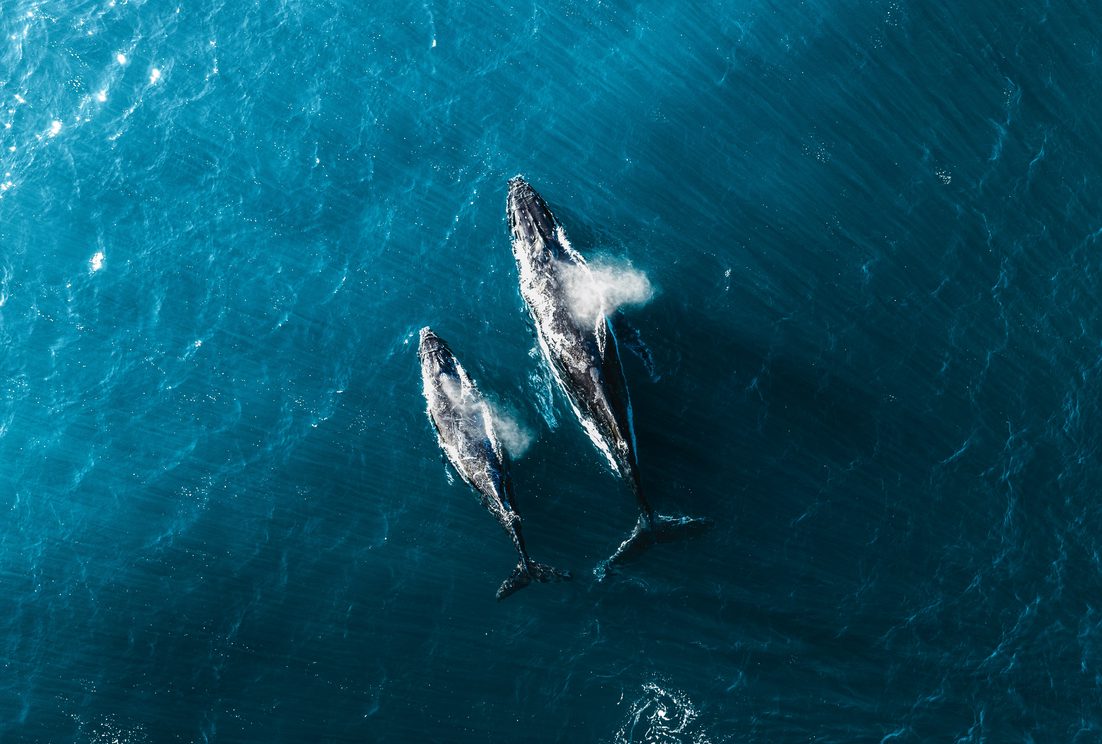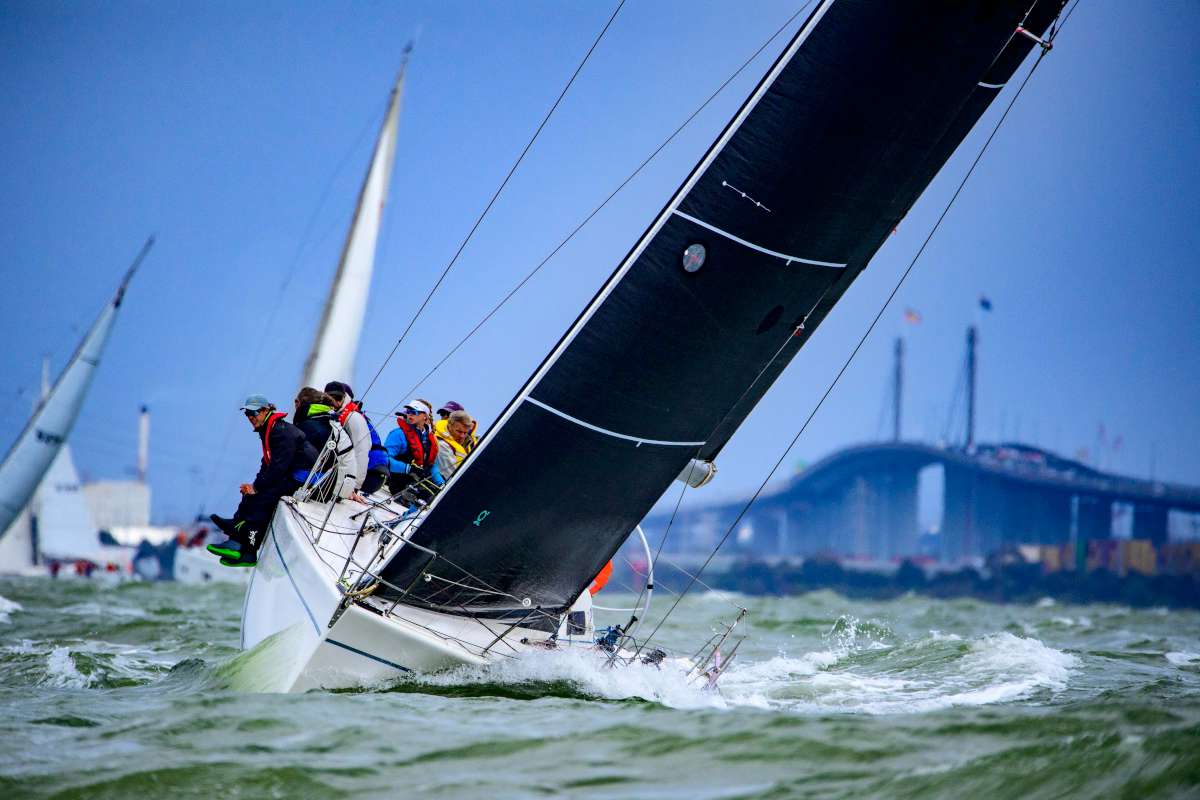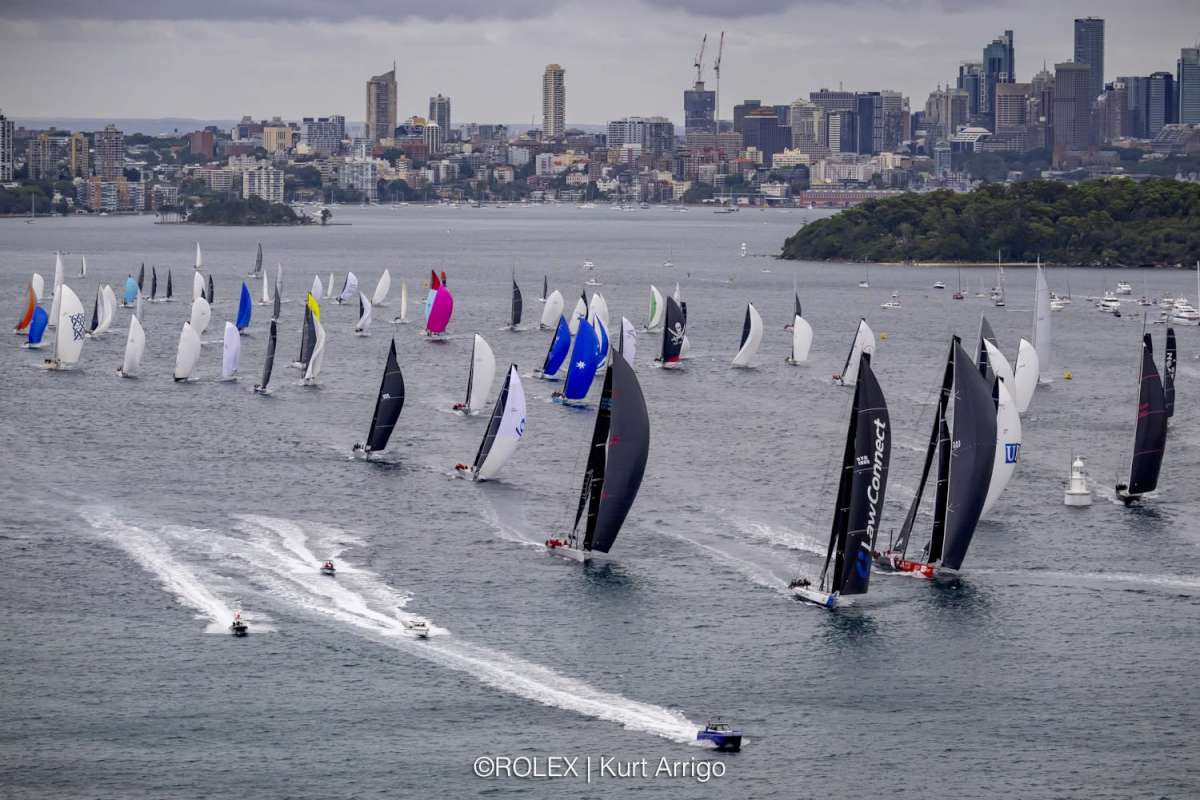Deb and I have been travelling through Asia for the past year on our sailing vessel Matilda, a forty three foot Hans Christian, Christina. During that time we have sailed through, or been at anchor, during a couple of nasty storms. However we were taken by surprise by what we were about to encounter.
It was the south west monsoon season and so far it had been pretty gentle. Even though it had been benign we, however, had been witness to some fantastic lightning displays and fast moving storm fronts bringing torrential downpours. These fast moving storms were usually over and the sun or the moon shining again within about half an hour.
We had explored the east coast of Malaysia before heading out to the gorgeous islands scattered along the coast in the marine park. Finally we checked out of Malaysia at Tioman Island, then island-hopped through the Anambas and then Natuna Island groups as we went east. Our planned trip was to visit towns along the coast of West Kalimantan, Borneo, as we worked our way back down to the north side of the southern Indonesian archipelago.
We made it to West Kalimantan and everything was going well and, after a couple of days of hectic sightseeing around Singawang and Kura Kura Beach, we were feeling a little tired; well, virtually exhausted.
After saying our goodbyes we headed out to the lovely low-key tourist and fishing village just off the coast on Pulau Lemukutan to recuperate. We anchored near the jetty at 00° 45.661'N 108° 42.988'E. After a couple of nights and a day of enjoying the hospitality of the friendly locals, it was time to make a move.
After setting sail it was not long before we were beating into a southerly that had been forecast to be a lot more easterly. Unfortunately, it was supposed to continue to blow at various strengths for the next twenty four hours.
Rather than continue to beat into it, as we approached Palau Temaju, we had a good look at the charts and found a little bay that would offer fantastic protection from the southerly winds.
It did not take long to make the decision to stop for the day and catch our breath and get some more rest. We manoeuvred our way gingerly into the bay around the squid huts and the damaged remains of old ones. We were able to find a clear spot to drop the anchor in six and a half metres of water at 00° 30.620'N 108° 50.927'E.
What a picturesque place to stop: turquoise water, a palm tree-fringed bay with a white sandy beach, as pretty as a picture on a postcard. Then, to top it off, a gentle breeze was coming over the hill to keep us cool and the wind generator was rotating fast enough to keep the batteries topped up. At the far end of the bay, just behind the palm trees were several fisherman’s day huts, there were next to no signs of life other than the odd fishing boat coming and going.
In the bay itself, as I have said earlier, were the remains of several squid attracting/catching huts. These are spider-like huts built up on bamboo or hardwood piles driven into the seabed in water up to fifteen metres in depth. At night the squid huts are manned, a large net that is suspended under the structure is lowered into the water. Then several very bright lights are turned on to attract the squid in above the net. After several hours we assume they have attracted a number of squid and fish so the net is pulled up and the catch removed.
During our travels we have seen several fishing huts and squid huts either falling down or have been badly damaged. With hindsight I do not think we were paying enough attention and seeing the big picture. There was the damaged remains of squid huts in the bay we were in, not just one or two, it was more like six or seven.
The remains consisted of the spear-like piles used to hold them up and, alarmingly, several more of these appeared when the tide fell. Amongst the wreckage there was whole or parts of platforms that had collapsed into the water. I had also noticed that on the beach was the damaged remains of a floating platform. While it is not uncommon to see things washed up on the beach, I thought it could have come from anywhere as it looked like the standard kit used for floating fish farms.
I must admit, at the time, I did not think the bay had been used for a long time to catch squid. Over the years the old huts have disintegrated due to age and, what normally happens, the old huts are not removed before moving into new ones. Whereas, what I should have been thinking was there must be nasty weather coming through here regularly and giving these squid houses a whacking.
We had spent a lovely day relaxing, swimming and just doing a whole lot of nothing. We even had one of the local fishermen and his two sons come by to say hello and, after the usual laugh over or because of the language barrier, we gave him some fishing line and an assortment of tackle. After a quick photo shoot he was off out of the bay and was headed east.
While he was there he was mentioning the village that was on the east side of the island. He also keep pointing to the water around the bay and shaking his head we thought he meant there was no fish here. We now wonder if he was trying to tell us not to stay here, but to go to the other side of the island. Perhaps he knew something we did not, as is usually the case with fishermen who have spent a life time at sea in the same area.
As the evening fell, the sun set was fabulous as they normally are. At the time there was nothing to see that should, or would, make us alarmed. Dinner was served and we relaxed into watching the movie about the events that inspired the novel Moby Dick.
Occasionally we would pop our head out the companionway to have a look as fishing boats motored past. We had noticed that most of the squid houses were well lit and there was always something oddly hypnotic about the lights suspended above the water as they sparkled like diamonds.
Getting toward the last ten minutes of the movie, I could see the odd speck of rain coming through the main cabin hatch. Getting up, I started to shut all the hatches to keep the rain out but did not notice any wind at first. By the time I had finished closing the last hatch above the galley, I noticed the wind speed had risen to a point where the wind generator had gone in to electronic brake mode; I knew the wind strength was above thirty knots.
Turning to the instruments we could see the wind speed was sitting steady at forty knots. While forty knots is not a problem, it was the fact it was coming from the north west blowing straight into the bay. OK, time to start the motor and make sure we have a good fix on anchor position with the GPS. I took a few sights to the shore but figured these are going to be pretty useless once the beach fires went out.
My first reaction was, judging by the speed the front had come in, it would be over before we knew it and we can finish the movie while the swell settled down.
With the wind whistling through the rigging, I was in the cockpit looking out on to the front deck making sure there was not any unsecured lines that could go over the side and be sucked into the propeller. While we do have a rope cutter fitted there is no sense in tempting fate.
The thing I was annoyed with myself about was that, due to the relaxed afternoon, I had not packed away some of the gear we had out when we were swimming and now it was sliding around the cockpit underfoot.
The wind speed continued to increase and the waves in the anchorage began to build. The fetch was the whole South China Sea so I was hoping this storm would pass as quickly as it had come. Deb was downstairs and had become quite seasick by this stage. She had been at the chart table keeping an eye on the instruments and continually checking our position, as we were pinned on a lee shore.
The wind strength continued to rise and before long we had gusts well over forty eight knots, who has time to look at the instruments when it is that windy? The anchor was holding well and I went forward with a torch and looked over the snubber and anchor chain. Yes it was in a straight line disappearing into the water and I could see that the snubber was certainly doing a lot of work stretching to the conditions. With the wind strength increasing I got out an old snubber and attached it as a backup to the anchor chain and fairlead so it would be ready to go if the other parted.
The conditions were deteriorating more and it was becoming very uncomfortable, I was getting thrown around the cockpit while I was trying to take the load off the anchor by driving the boat forward slowly. To be honest I am not sure if I was doing much but I was able to keep the nose into the swell. Before long the swell started to become surf rolling in through the bay, one by one the lights on the squid houses went dark. As the storm progressed the bow of Matilda started to dip into the surf and water was washing down the side decks.
Well it does not get much worse than this and I started to feel a little seasick myself. Deb was laying on the couch, bucket in one hand and hanging on with the other. Then she let out a scream and ran for the cockpit yelling that the anchor chain is paying out. The snubber had parted and the secondary must have deployed and then let go as well.
Oh hell, this is not the way I had envisioned the evening going.
The boat was in gear so I upped the revs and the chain stopped paying out. Deb took the wheel and I went forward to see what had happened. I found the chain had jumped off the bow roller and had wedged its self between the bow roller cheek and the bulwark. The remains of the two snubbers trailed in the turbulent white water as it washed past the boat.
I checked to make sure the chain gypsy brake was tight, it was. So at this point I knew we were not going anywhere for a moment.
However, now the chain did not have any shock absorption and, from past experience at work, I know chains can elongate or break, or we will pull the anchor out of the ground with the heavy shock loading and snatching it was now experiencing.
I went back to the cockpit and we quickly discussed getting out of the bay in one piece. Our biggest fear was that the bay was littered with the piles, plus debris of old squid houses so we needed to follow the same track we made coming into the bay earlier in the day. The other unknown was what was underwater behind us if we put out another snubber and tried to stay still.
The handheld GPS has a reverse route/trackback function so the former was not going to be hard as long as we could control the boat after we get the anchor up. We knew the boat could push through the wind and seas, we had done so when the chain started to pay out. So it was control we had to worry about, but knew if we get the anchor up we should be able to follow a track even if it is slowly pushing into the current.
Once we had decided to make a move I got out a pry bar to unwedge the anchor chain. Then unbelievably, at about the same time, the wind strength dropped to forty knots and for a moment we looked at each other in total disbelief, suddenly it was so quiet.
We could talk to each other rather than yell over the screeching wind in the rigging. Then, later when the wind fell to thirty five or thirty I could hear the ringing in my ears.
Armed with the pry bar I went forward to dislodge the anchor chain, we had worked out a course for Deb to steer and we went over our hand signals one more time. Even though we already use and have good hand signals to aid anchor deployment or retrieval, we wanted to make sure we both understood the infrequently used signals just in case they were needed.
The pry bar popped the chain link free and I was able to move the chain back onto the bow roller once the tension came off as Deb motored forward. She could see my hand signals easily thanks to the illumination of our bright forward facing deck light. While the chain was coming in over the roller into the anchor locker easily, my biggest problem was contending with the surf and rollers that swept across the deck. I had to get down low and hang on with both hands as the big ones would come over the bow or the boat would plunge down the back of the next wave. This worried Deb because when I ducked down low to protect myself she would lose sight of me and twice she thought I had been washed over the side as the waves and whitewater swept over the deck.
Thank goodness we had foot switches to control the winch, I now know I could not have hung on and operated a winch hand control at the same time. It also was not easy to direct which way to go trying to hang on and give hand signals, but at least I could direct and grab hold again quickly.
I was relieved when I felt the bow of the boat get that characteristic dip as the chain sat vertical and knew we were extracting the anchor from the bottom. I gave the signal to increase the revs to finally haul it free, it must have been buried in deep because it took longer than expected to break free. Even though there was so much going on I felt the anchor break out and the boat rise on the next roller and the winch started to move quickly. Thumbs up and we were off, I finished parking the anchor and moved aft hand over hand down the handrail.
Once back in the cockpit we headed out to sea following the original track we created getting in. We went out into deep water to make sure we were clear of any old squid house piles. Now all we had to do was contend with the swell. Deb went back to the couch and tried to find a comfortable place; no sense both of us being out in the cockpit being thrown around. After half an hour I was getting sick of just hanging around bobbing up and down pointing into the seas.
The plan was to get into the lee of the island. The reason we did not do it earlier was that we were worried that on the other side there would be some more unlit squid houses or the remains of them.
As we motored around the corner at a distance, the seas started to flatten and then, once we were behind the hill, the wind dropped off almost completely.
There were squid huts here but they were all still well-lit and the additional light made it reasonably easy to make out the silhouettes of the fishing boat fleets that had taken refuge on this side of the island. We started using our handheld spotlight to make sure we were not going to run over any unlit canoes or small boats.
Motoring in closer to the shore we set the anchor in ten metres of water and we were finally able to shut down the motor. It felt surreal, if we did not know what was happening on the other side of the island you would certainly have no clue from where we now sat.
At two am and after washing the salt off, the two of us fell into bed exhausted. Then we could not believe it, at six thirty in the morning we were rudely woken as the swell increased when the southerly picked up again once the influence of the storm had past.
Lessons learned
What did we learn from our experience? If there is a good thing to come out of this storm it is that we will pay a little more attention to get protection from the west before anchoring in any more of the bays along the coast.
An old school GPS receiver with monochrome LCD screen that can be set as a drag alarm is worth its weight in gold. As fancy as the new ones are with their bells and whistles they appear to have been over-engineered and now do not seem to have the same resolution to draw the thumbnail track pattern so you can see if you have moved out of your anchor circle easily.
Even an old handheld GPS receiver can fulfil this function but a lot of the alarm buzzers on the handheld will not wake you up. When manoeuvring into an anchorage, record a track on your GPS device just in case you need to get out of there in the dark.
Before retiring for the night, pack up the boat like you are going to sea; I was very disappointed with myself that I had to negotiate slippery lines and swimming gear in the cockpit while also trying to stay on my feet.
Of the two snubbers that parted I was lucky to get part of the second one back. It was older and did not have the heavy duty thimbles in it that I now use. Both snubbers parted toward the boat end and both of the bits left on board had to be cut off the fairlead cleats because the nylon had melted and fused a lot of the strands of the lines together, down to where they parted. Yes, there was that much friction to melt the rope as the boat was pushed and pulled when the wind and surf worked in tandem.
The second snubber did not look quite this bad as in the photo, it was older but looked in good condition, the bottom must have been fairly abrasive. You cannot see it from the photo but the core of the second snubber rope I was able to retrieve is welded together for the remaining length and it cannot be unwound.
The Dyneema loop certainly worked; as can be seen from the photo the loop had started to compress the thimble cheeks, I do not know if this would have developed into a problem hotspot if the rope had not parted. The thimble was now also in bad shape and was starting to collapse. Because this was an older snubber it did not have the heavier duty thimbles I now use. So I do feel happy with my decision to pay a little more money and get heavier thimbles from a lifting gear shop
when I buy gear nowadays.
Were the snubbers undersized? I do not believe so, the rope size was 16 millimetre and this is what I would use if I had to have a mixed anchor rode. Perhaps it would have been better that I had set two ten or twelve millimetre snubbers as back up should the main fail, but would friction also have been its downfall? The nylon rope used to make the snubbers was made in Australia by a reputable rope manufacturer, it was not of unknown origin.
Having an automatic electronic brake on the wind generator is a good idea, if you do not perhaps it is time to think about an upgrade. This was one less thing we had to worry about or contend with. Our older unit would more than likely have exploded and sent shards of blade material flying all over the place, a very dangerous situation.
Be proactive, do not just sit inside and hope the whole thing will blow over. Service your anchor winch and make sure there are no niggling problems with the pickup.
I have seen winches where you need to remove covers and hit the solenoids or short them out to make it work. Well, in this situation, it would have shorted out the whole lot as the saltwater washed over the bow.
While I have seen a lot of handheld winch control remotes and been a little envious; I had always thought I am going to put one together for myself one day. Needless to say, after this experience I removed that job from my wish list. The foot-operated buttons work a treat when you are using both hands to hang on.
The coordinates given are for reference and for anyone who would like to look at the positions using one of the many online satellite photo/map providers. ≈





